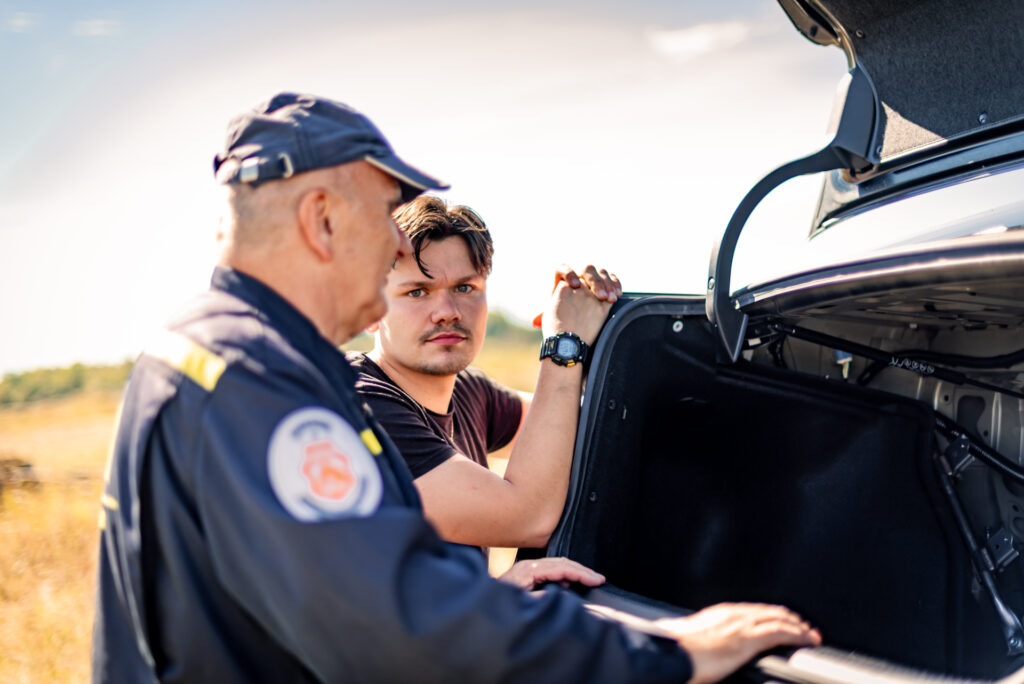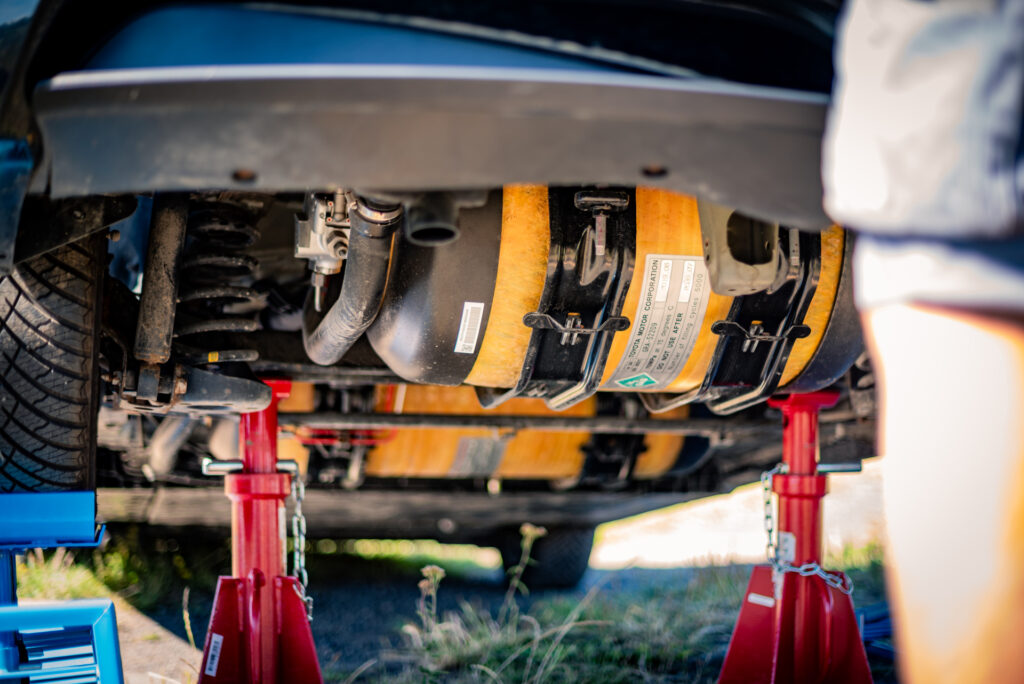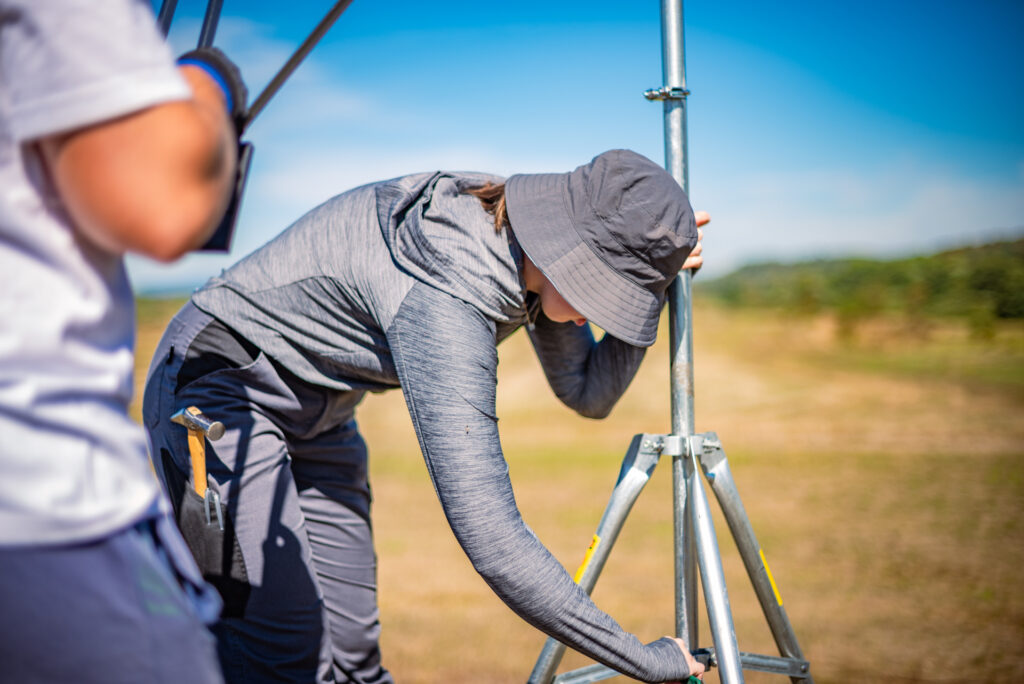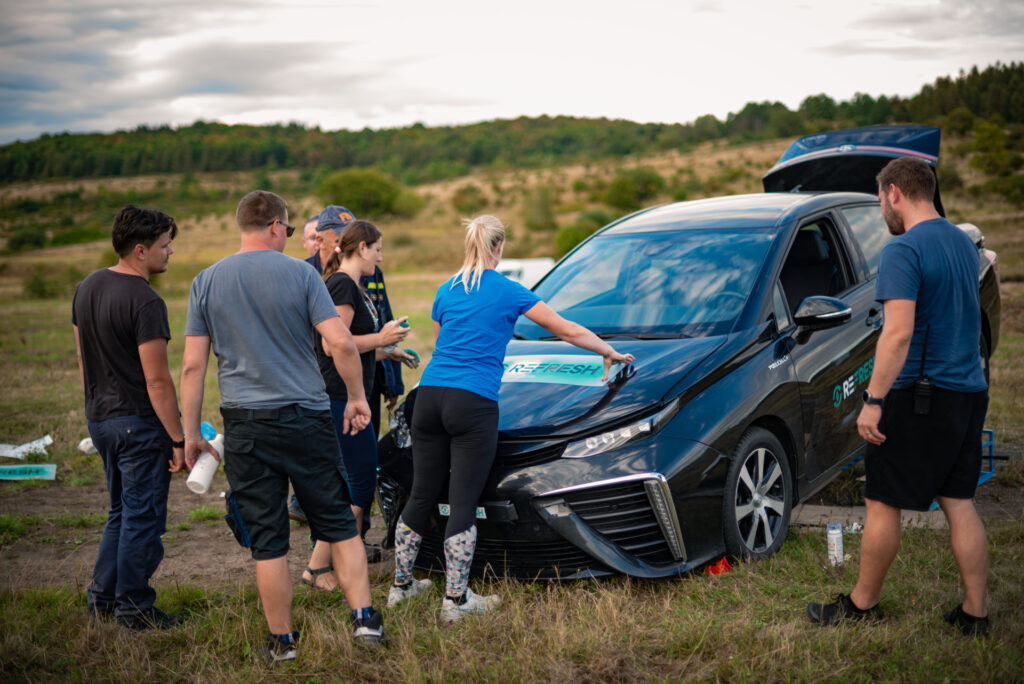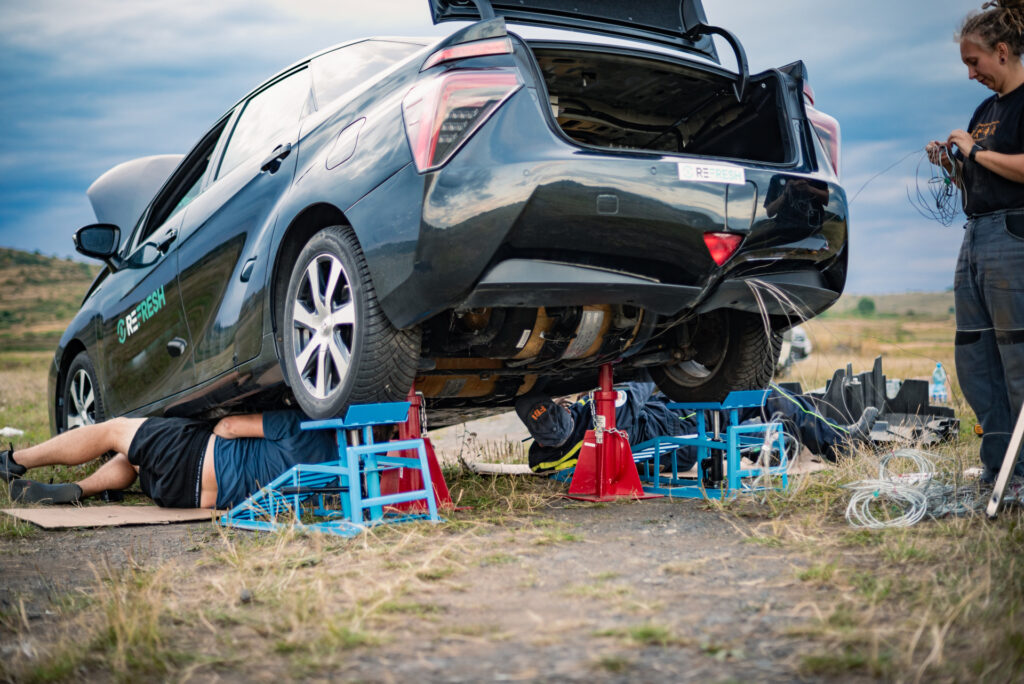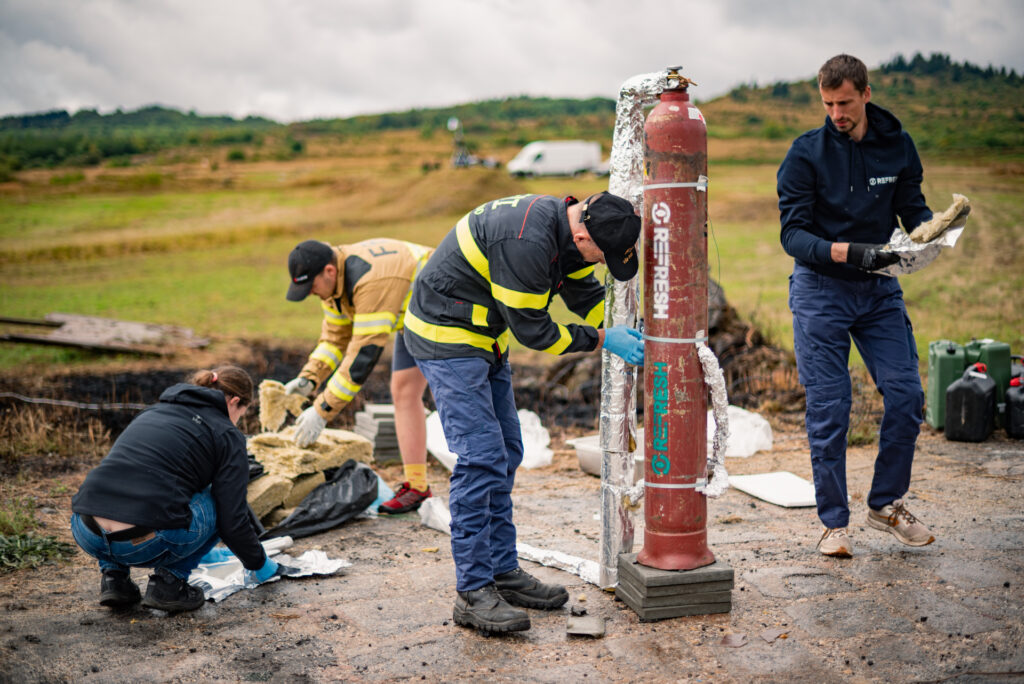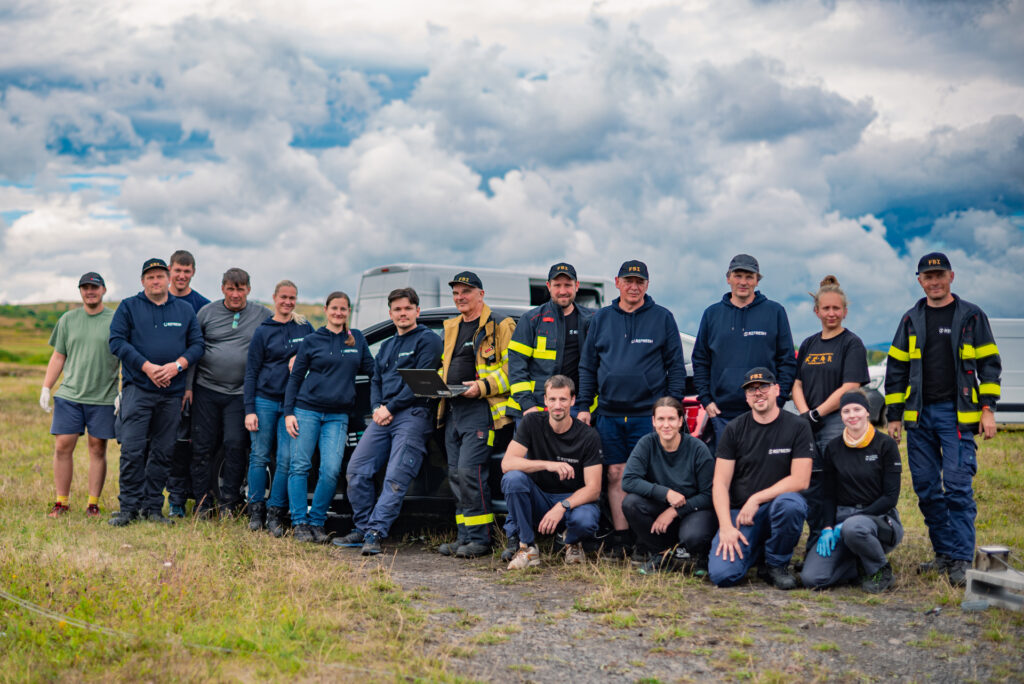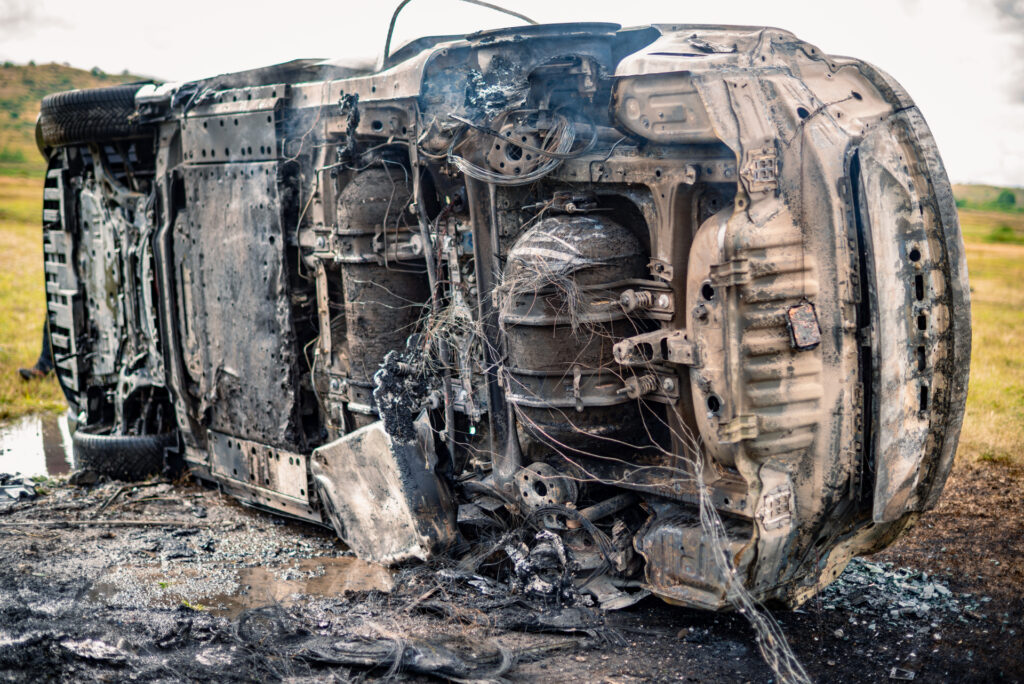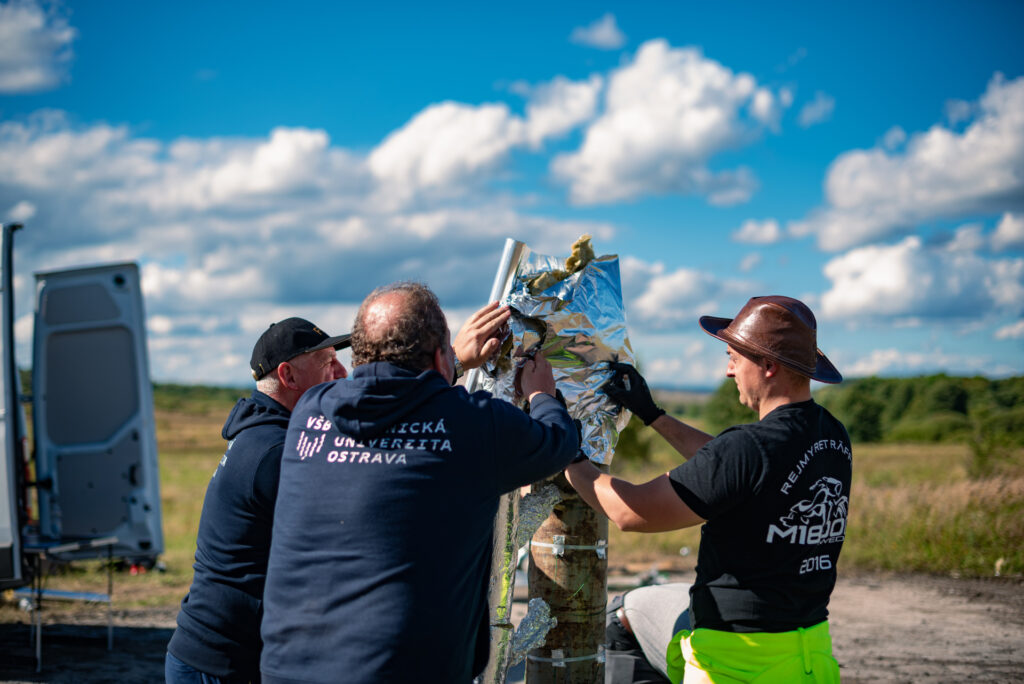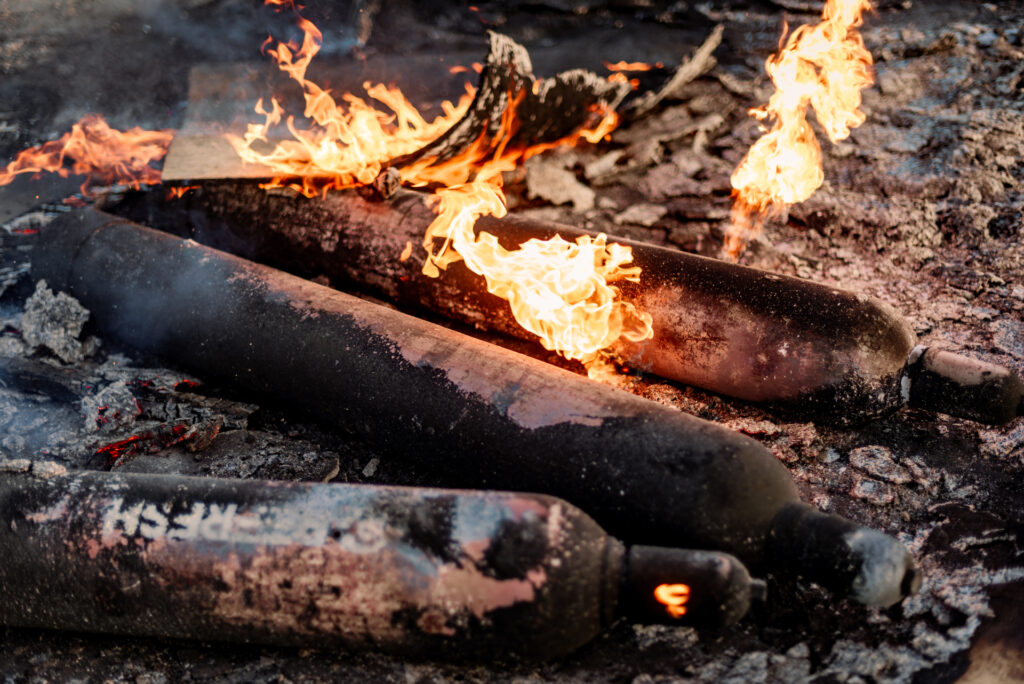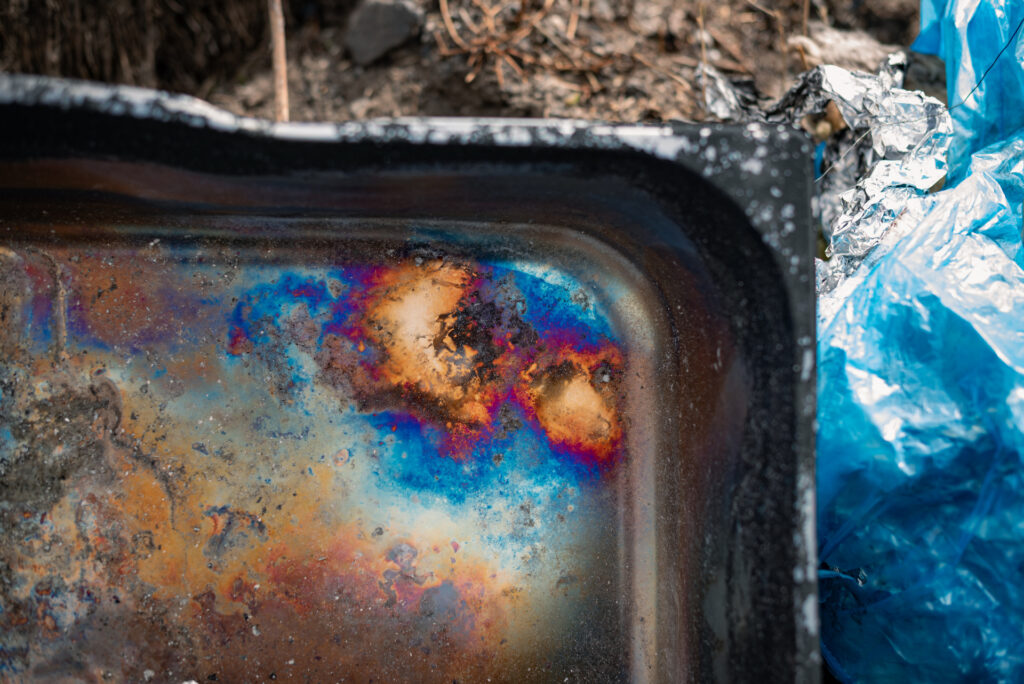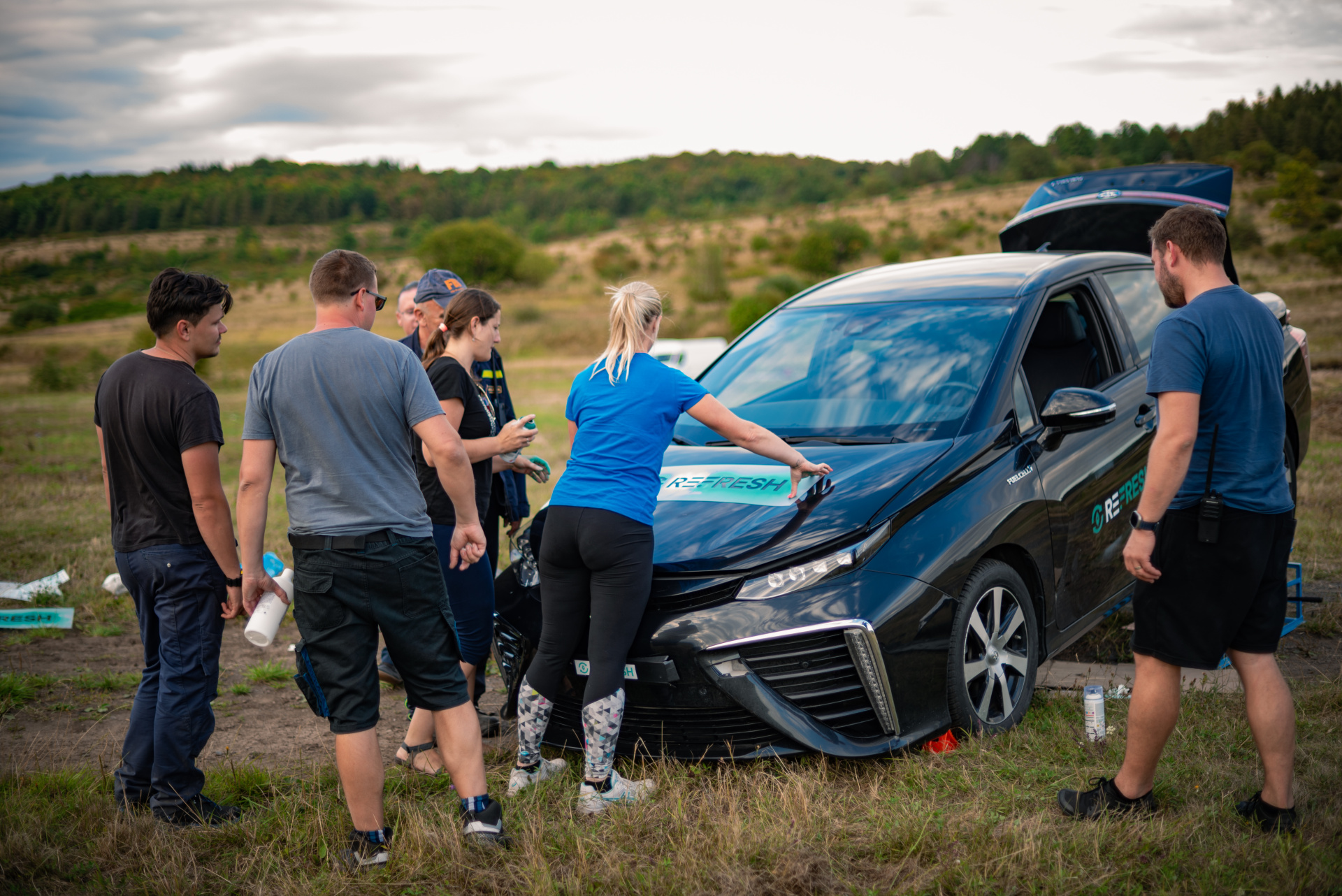
Further experiments to enhance the safety of hydrogen technologies
Thorough verification of the safety and behavior of hydrogen systems in various emergency conditions, the design of protective measures for storing and handling hydrogen tanks, and the evaluation of thermal, mechanical, and explosive loads linked to the use of hydrogen, acetylene, and oxygen on a real scale — these were the goals of the experiments conducted in September at the Hradiste military training area by researchers from the Faculty of Safety Engineering as part of the REFRESH project. The findings provide valuable insights for firefighters and police officers.
One of the scenarios simulated a fire in a hydrogen-powered passenger car after a traffic accident. During this test, experts monitored temperatures on selected critical vehicle components, tracked thermal radiation around the burning car and escaping hydrogen, using, among other protocols, drones equipped with thermal imaging and standard cameras to collect data.
“The test confirmed the proper operation of the car’s safety features, with hydrogen being safely vented from the pressure cylinder through the safety systems as intended, preventing its destruction. However, the resulting fire jet poses an increased risk to emergency crews, and the results clearly show that in real-world scenarios, responders must approach a burning hydrogen vehicle of this type from the front. This knowledge significantly improves responder safety. Visualizing and understanding the risk of sudden hydrogen release enables more effective procedures in fires and accidents involving hydrogen-powered passenger cars. The findings also provide insight into fire development speed, the activation time of safety valves, and thus safe access to the vehicle,” summarized Vojtech Jankuj from the Faculty of Safety Engineering.
Experts also simulated an explosion in a confined space by controlled shooting of acetylene and oxygen pressure cylinders. “This method releases the cylinder’s contents into the surroundings, creating a potential explosive mixture that may ignite. The tests were successful, and the recorded results will be used for training purposes. These outcomes are crucial for assessing safety and setting tactical procedures for cooperation between the Fire and Rescue Service and the Police of the Czech Republic when dealing with hazardous (damaged) pressure cylinders,” explained Ales Dudacek from the Faculty of Safety Engineering.
Besides the researchers from VSB-TUO, the experiments involved experts from the University of Defense, representatives of the Fire Rescue Service, the Police of the Czech Republic, the Army of the Czech Republic, and commercial partners. The collected data will support the further development of hydrogen systems and contribute to improving their safe use.
